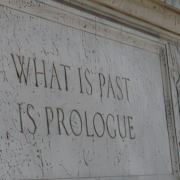To prologue or not to prologue
It seems nothing is guaranteed to start a debate among readers and authors more than the issue of whether a book ought to have a prologue. Does a prologue serve any useful purpose or is it a lazy way of starting into a story?
It appears the jury is still out. Not too long ago, if you are to believe a lot of things written on the subject, the book industry’s top-hitters, namely publishers and agents, were set against the whole concept of prologues. For some reason their minds are changing – and I can see why.
Prologues work best when an author uses them as a platform from which to launch his/her subsequent story. In almost all cases they should be detached in time from the story about to unfold – a means to provide a teasing event, the significance of which will only become clear as the main story unfolds.
The best examples of the use of prologues are to be found in the novels of Clive Cussler. He made an art out of beginning his yarns with a seemingly unrelated story, usually set in prior decades or centuries, only for the reader to discover that this story (or backdrop) is essential to the understanding and enjoyment of the modern-day tale that is about to unfold.
Cussler did it so well that often the reader feels a sense of loss at leaving the era of the prologue to begin the main event!
Naturally, prologues don’t have to be as separated in time as Cussler often makes them. An event within a year, of even a few months, of the opening main sequence of a story, will serve just as well to grab the attention of readers – provided, of course, the need for a prologue actually enhances the overall reading experience.
The reason why a lot of people aren’t switched on by prologues is that often they are little more than Chapter 1, dressed up in a fancy title that authors somehow think makes their overall product look a bit sexier. It doesn’t.
It’s plain daft to begin with what is called a prologue if the next chapter (now called Chapter 1) simply follows on from the events told in the prologue. I’ve read a lot of so-called prologues only to discover that the ‘first chapter’ begins with the same characters, talking about the same things a mere few hours later!
As I’ve said, prologues should be ‘teasers’ and used only where there is justification for back-dropping a story in a different context, or providing a related event, which will start to make sense for the reader as the story progresses.
They are often used these days as an early means to get inside the head of the baddie, say a serial killer, to tell the back-story of how he/she came to start their murdering rampage. The main story then opens with the detective assigned to the case, by which stage the reader has a sense of the difficulties that will be involved in tracking down the culprit. In this example, if the writer inserts a lot of graphic detail into the prologue, the reader will also engage immediately with the detective in the desire to catch the killer.
Generally, extreme care must be taken with the use of prologues. Not only should they have a proper context, but authors need to be wary of the fact that these are the first views readers have of the style and pace of the writer. They are the shop window and if they’re not dressed properly the reader is unlikely to go much further.
Is there a simple rule on the use of prologues? Unfortunately, not. Bearing in mind what’s already been said there is usually little need for a prologue – and so it’s not a question that should vex authors as much as it appears to.
A story should always be told with the reader in mind. I always like the philosophy of getting a story started in an interesting way, keep it flowing, and end it with as much drama, pathos and fanfare as you can muster. Nothing else matters.
But – and it’s a big but – if the end product can be enhanced by the use of a well-scripted and properly thought-out prologue then not only should the author go for it, but he/she has an imperative to do so.





Leave a Reply
Want to join the discussion?Feel free to contribute!